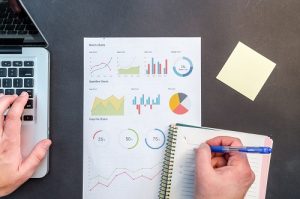We all work with data. Smart decisions can’t be made without data. It’s safe to say that data make the work go around. Just imagine if there weren’t any data. Where would we all be? We’d all be back in the dark ages where our survival was based merely on hunting for food. We have definitely gone a long way since then because our survival now relies on data. And when things go bad, RAID data recovery becomes necessary.
Nowadays, the data industry has grown immensely. From data practitioners to data scientists, several skill sets have been created to deal solely with data.
Numerous job adverts focus on data visualization skills while not necessarily specifying the importance of analytical skills. Job titles reflect this trend with the emergence of new roles such as ‘data artist’, ‘data visualization expert’ and ‘data storyteller’, but organizations are still looking for people who can extract value from their data, so these roles must include analytical skills.
In this huge data community, there are two terms that are bit confusing. These two data terms are data analysis and data visualization. What’s the difference between the two?
The two terms data analysis and data visualization seem to have become synonymous in everyday language in the wider data community.
We often hear about data analysis in the workplace. It’s a term that’s used all the time. The question is, what really is data analysis? Is it really just analyzing the data that’s made available?
Data analysis is an exploratory process that often starts with specific questions. It requires curiosity, the desire to find answers and a good level of tenacity, because those answers aren’t always easy to come by.
It really takes more than just analyzing available data. It’s not enough to say that we all have to look deeper into the data to get insightful answers or solutions. Data analysis is a fact-finding process to discover something relevant.
Data visualization may sound new. Nonetheless, it’s a very significant and specific task in the wonderful world of data.
Data visualization involves the visual representation of data, ranging from single charts to comprehensive dashboards. Effective visualizations significantly reduce the amount of time it takes for your audience to process information and access valuable insights.
Is one more important than the other? Of course not. Both are greatly important in the world of data. As a matter of fact, one can’t do without the other.
However, that’s not to say that the two never work in harmony – far from it. In working with data, analysis should come before the visual output, but visual analytics can be an excellent method for running more effective analyses.
Visual analytics involves the process of building different charts with your data to give you various perspectives. This helps you identify outliers, gaps, trends and interesting data points that warrant further investigation.
Both data analysis and data visualization are important in coming up with cutting-edge findings. With the exponential growth in data, data visualization makes it easier for us to get a representation of what we need exactly from the raw data. Since data visualization transforms critical information into charts, graphs, videos, and images we are able to understand the numbers and eventually gain valuable insights from them.
The data world is so huge these days that we all need various ways to create value out of them. Both data analysis and data visualization are ways to make use of the abundant information that’s available out there.
That just goes to show the importance of data in everyday life. We simply cannot make sense of the available data if we don’t protect them. It’s a no-brainer. We won’t be able to analyze data, more so visualize them, if we don’t protect them.
When it comes to data, especially big data, protecting them is the first thing we should consider. How do we do that? We should be aware of how we can recover data in case something happens to our computers.
While we can do our own little way to recover data, big data recovery should be left to the experts at Hard Drive Recovery Group. When it comes to big data recovery, the experts know better.

